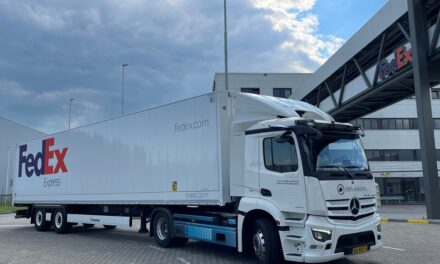
FedEx to cut “thousands” of jobs in 2013, after Q2 profits sink 12%
FedEx Corp is preparing to shell out $550m to $650m next year as it looks to cut “thousands” of staff to boost company profitability. The company said today it expected the buyout offers to be made in February 2013, with staff from FedEx Express and FedEx Services set to leave by May 2013.
The downsizing comes as part of an overall effort to improve the Memphis-based integrator’s profitability by $1.7bn a year, with a “substantial” amount of that to be achieved by fiscal year 2015.
The cost-cutting plan also includes other moves to transform the domestic US air network and restructure international operations to respond to a shift in customers towards more economy express services.
Frederick Smith, the FedEx CEO said today: “I’m very confident that we’re on our way to achieving this ambitious goal.”
FedEx was looking ahead to its profits improvement plan today as it recorded a 12% drop in net income during the second quarter of its fiscal year compared to the same period last year.
The integrator saw strong ecommerce growth driving improvements in its Ground and Freight divisions, but the FedEx Express division saw a 33% cut in operating income year-on-year.
Overall revenues for the three months ending 30th November were up 5% year-on-year, to $11.1bn.
But net income sank to $438m from last year’s $497m.
Weakness
Hurricane Sandy inflicted some of the damage on the quarter’s results, and was blamed for $0.11 of the $0.18 per share drop in the quarter’s diluted share earnings. Changes in fuel surcharges, pension arrangements and the costs from significant FedEx Express acquisitions in Europe also affected results in the quarter.
But FedEx Express was particularly hit by the continuing “weakness” in the global economy and with more customers looking to reduce their use of premium express services, in favor of economy deferred services. In the quarter, the premium International Priority service grew revenues 3% compared to a 14% growth in the International Economy service.
Overall margins for the company as a whole fell just over a point from 7.5% a year ago to 6.4%.
Smith said: “Operating income for the quarter improved at FedEx Freight and FedEx Ground due to increased volumes and higher yields, while persistent weakness in the global economy and increased demand for lower-yielding international services limited profits at FedEx Express.”
Speaking to analysts this morning, FedEx executives expressed confidence in the $1.7bn profit improvement programme achieving its goals.
FedEx CFO Alan Graf said FedEx had budgeted $550m to $650m for its buyout programme next year, although the exact amount would depend on how many employees accepted their buyout offers.
“We are working hard on our reorganization plans, we think we know within the general range how many people will accept, but it would be difficult for me to say exactly how many it will be until February,” said Graf, adding that the number would be in the “thousands”, mainly from FedEx Express and FedEx Services, which is the IT and administrative wing of FedEx Corp.
FedEx Express
Looking at the individual divisions of FedEx, the third quarter saw a 4% increase in FedEx Express revenue compared to the same period last year, up to $6.58bn.
Operating income slipped 33% to $230m for the quarter, with operating margin down from 5.2% a year ago to 3.4%.
Revenue growth came mainly because of acquisitions including Polish courier firm Opek and French firm Tatex, as well as growth at FedEx Trade Networks, but both of these brought with them increased costs that dented net income.
US domestic package volumes dropped, with average daily volumes down 2% year-on-year, although rate increases helped lift revenue per package 1%. On the international side, strong demand for economy services drove a 6% uptick in international export average daily package volumes, but hit yields, with revenue per package down 4%.
FedEx Express has been responding to shifting customer demand by looking to use more ground transport and less air transport for items sent by deferred services.
FedEx Ground
Ecommerce was the great boon for FedEx Ground, as FedEx Home Delivery and FedEx Smartpost helped drive revenue for the division up 11% to $2.59bn, with operating income up 4% to $412m.
Higher volumes and revenues per package were partially offset by higher contractor rates, FedEx said, along with network expansion costs and Hurricane Sandy, while higher fuel costs hit margins.
FedEx SmartPost – the service that uses the US Postal Service to deliver packages over the last mile – saw average daily volumes increase 17% thanks to Internet shopping. The service’s revenue per package increased 2% on the back of rate increases, partially offset by higher USPS postage rates.
The freight side of the FedEx business saw a 4% uplift in revenues, to $1.38bn, with operating income up 90% from a low starting position, to $76m.
FedEx Freight benefited from higher yields, volume growth and operational efficiencies within the network, with less-than-truckload average daily volumes up 2% mainly from demand for FedEx Freight Economy.












